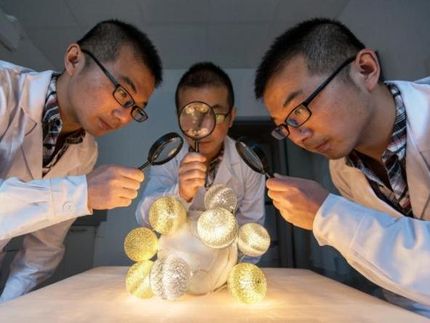Max Planck Innovation Concludes Licensing Agreement for Technology Providing Unlimited Resolution in Microscopy
Overcoming Abbe's law in light microscopy
Max Planck Innovation GmbH, the technology transfer agency of the Max Planck Society, has signed a co-exclusive license agreement with Leica Microsystems and Carl Zeiss MicroImaging GmbH for the RESOLFT (reversible saturable optical fluorescent transitions) technology, a method providing molecular scale resolution with visible light and regular lenses for use in microscopy.
The technology is breaking the century-old diffraction resolution barrier in conventional microscopy and allows for resolution of the size order of a dye molecule, i.e. a sharpness of one or two nanometers. While a number of technologies such as electron microscopy exist to visualize virus particles, sub cellular structures and macromolecules, RESOLFT fluorescence microscopy for the first time enables researchers to observe these structures inside of living cells without destroying them.
Both licensees will now seek to develop novel microscopes and imaging technologies based on the RESOLFT technology. "We decided to offer the technology for co-exclusive licensing to strengthen the German industry base," said Jörn Erselius, Managing Director of Max Planck Innovation. "However we decided to limit the number of co-licensing opportunities to three, so a third license is still available. In addition the technology is still available for licensing in the field of creating a permanent structure with high three-dimensional resolution."
Most read news
Topics
Organizations
Other news from the department business & finance

Get the analytics and lab tech industry in your inbox
By submitting this form you agree that LUMITOS AG will send you the newsletter(s) selected above by email. Your data will not be passed on to third parties. Your data will be stored and processed in accordance with our data protection regulations. LUMITOS may contact you by email for the purpose of advertising or market and opinion surveys. You can revoke your consent at any time without giving reasons to LUMITOS AG, Ernst-Augustin-Str. 2, 12489 Berlin, Germany or by e-mail at revoke@lumitos.com with effect for the future. In addition, each email contains a link to unsubscribe from the corresponding newsletter.
More news from our other portals
See the theme worlds for related content
Topic world Fluorescence microscopy
Fluorescence microscopy has revolutionized life sciences, biotechnology and pharmaceuticals. With its ability to visualize specific molecules and structures in cells and tissues through fluorescent markers, it offers unique insights at the molecular and cellular level. With its high sensitivity and resolution, fluorescence microscopy facilitates the understanding of complex biological processes and drives innovation in therapy and diagnostics.

Topic world Fluorescence microscopy
Fluorescence microscopy has revolutionized life sciences, biotechnology and pharmaceuticals. With its ability to visualize specific molecules and structures in cells and tissues through fluorescent markers, it offers unique insights at the molecular and cellular level. With its high sensitivity and resolution, fluorescence microscopy facilitates the understanding of complex biological processes and drives innovation in therapy and diagnostics.


























































